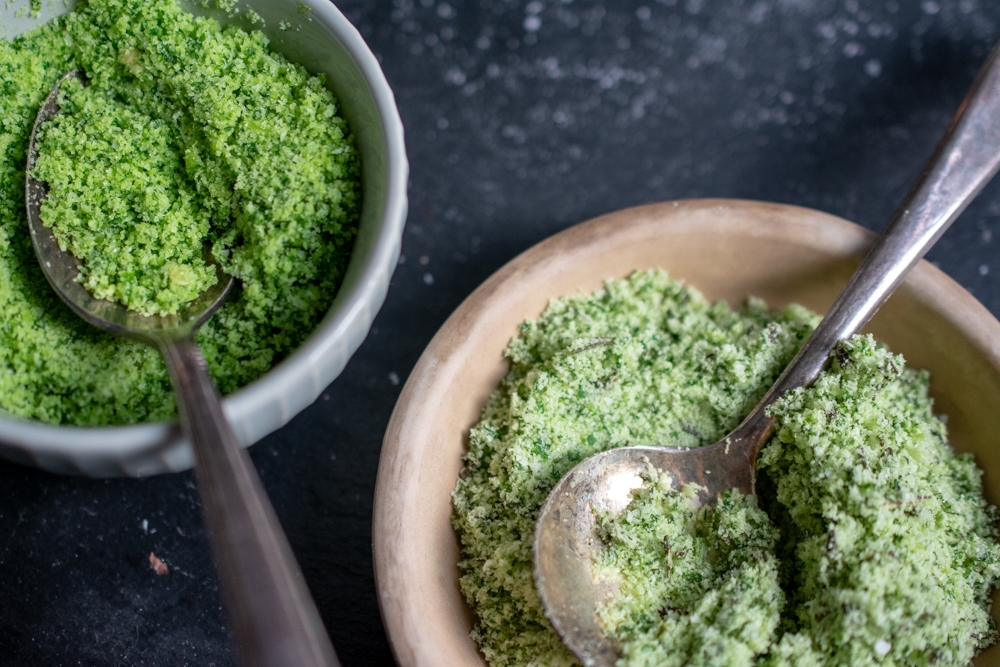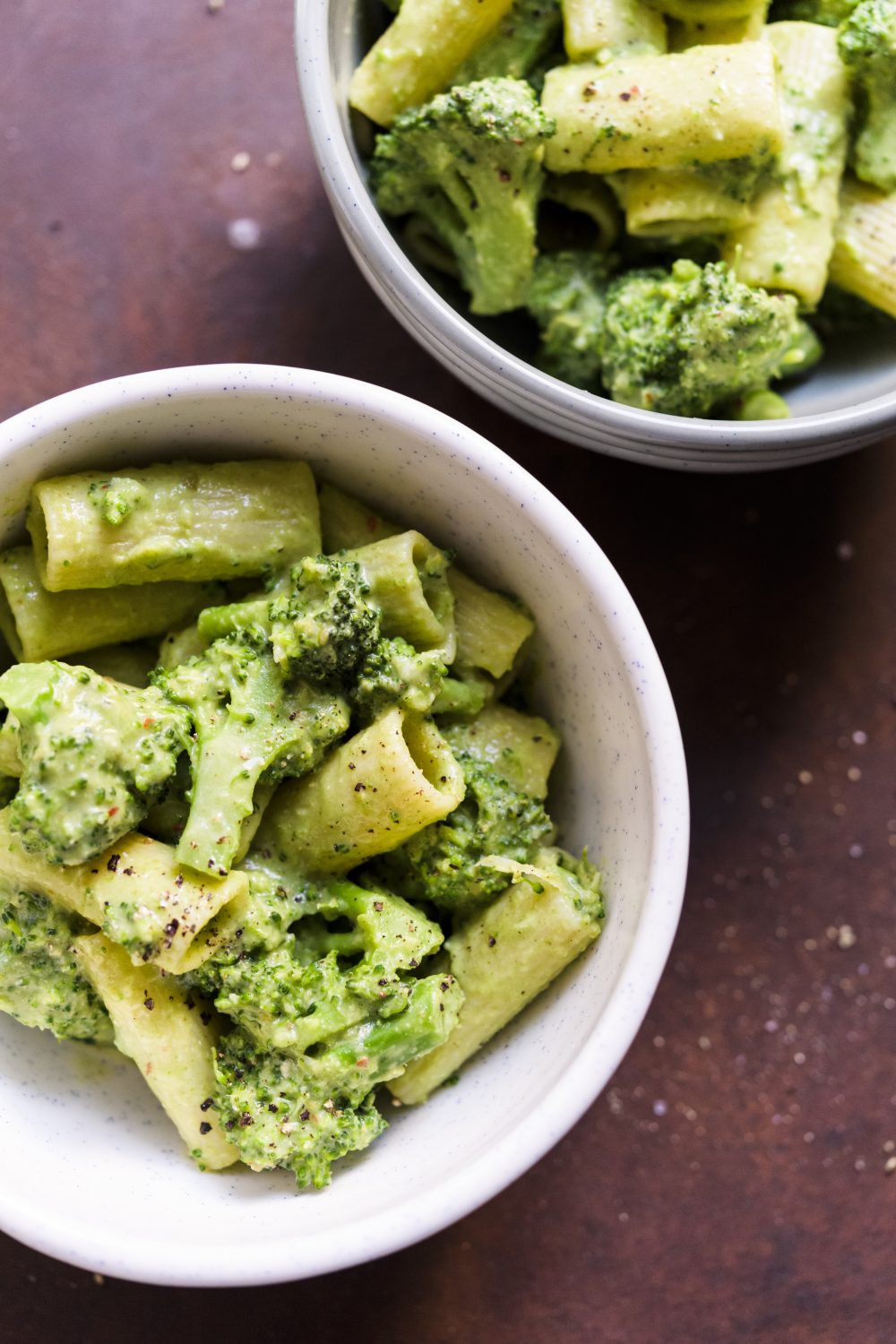If you want to be greener in the kitchen, there are so many places to start. Shop local, buy organic, move meat to the side. Plan smarter, use the whole vegetable and compost when you can’t. The good news is that these simple changes can save time and money in the long run, in addition to being more environmentally friendly. Start by incorporating one new practice or product into your routine, and once you see how easy it is to be a little more sustainable, you’ll be inspired to do more.
Carry On
Many cities have already banned plastic bags, but no matter where you live, carry a reusable tote when you go to the grocery store or farmers market. We like these antimicrobial, biodegradable Rough Linen Produce Bags, made from recycled fabric scraps with thick stitching and reinforced seams so they’re strong and durable. They’re also great for storage because their natural hollow fibers carry excess moisture to the surface so it evaporates quickly, which keeps produce fresher longer.
Rough Linen makes an equally sturdy Loaf Bag, which keeps bread similarly protected from moisture so it won’t go stale so fast. The bag’s generous length is ideal for longer loaves or baguettes, but if you’re buying a round loaf, there’s a bag for that, too. (Should your bread end up going stale, however, we’ve got you covered. See below.) Smart packing isn’t just for shopping either. If you’re bringing a dish to a party or potluck, try this canvas Aplat Culinary Casserole Tote, a convenient way to carry food horizontally. It’s made from sustainably sourced cotton and designed to minimize excess scraps, any of which go to an upcycling partner who repurposes them for insulation or packing material.
Make a Plan
Don’t leave the house without a list. Planning in advance will help you from buying too much, so that you don’t throw away excess later. Following a recipe may not always mean you know exactly how much to buy, however. How much ginger do you need for that one grated tablespoon the recipe calls for, or how many scallions is half a cup, thinly sliced? We took some of the guesswork out for you by testing some common produce conversions, so you only have to shop for what you need. See our handy chart comparing raw to prepped ingredients here.
Drink Up
Plastic straws are making the way of plastic bags, and reusable straws are in. We like easy-to-clean ones like this Straight Glass Drinking Straw. Made from strong borosilicate glass, it’s dishwasher-safe, and the clear glass makes it easy to see if it needs to be cleaned. A set of two also comes with a small brush if you want to wash by hand. If you prefer a curved straw, head right this way.
Cook Smart
In the kitchen, aim to use every part of the vegetable. That might mean using carrot or potato peels to build a vegetable stock. Or it might mean pureeing broccoli stems and leaves into a delicious pasta sauce, as in our Rigatoni with Roman Broccoli Sauce, a staff favorite here at Milk Street. Don’t throw away your chard stems, either. Use them to add flavor and texture to dishes like this Tunisian chickpea and swiss chard stew or ribollita.

Leftover herbs, meanwhile, can be laid out to dry on parchment paper to become spices to use later. Or you can mix them with salt to create a spice blend of your own. You can also save the water in a can of chickpeas to use as a vegan egg substitute. If you’ve never heard of aquafaba, read about it here. Or, if it’s stale baguettes you bump up against too often, we have a handy trick for resuscitating stale bread.
Store Wisely
Trade your plastic wrap for reusable options like Bee’s Wrap Reusable Food Wraps, flexible and washable waxy sheets that are great for wrapping food or sealing containers of all sizes. You can reuse them by washing with mild detergent in room temperature water (hot water will cause the wax to melt and the bags to deteriorate more quickly), but the wax sheets are also compostable, too. Vermont-based Bee’s Wrap also makes sandwich wraps perfectly sized for sandwiches, fruit or pastries.
We’re also fans of Vegibag Reusable Storage Bags, which maintain freshness by locking in just the right amount of humidity. Simply wet the bag, wring it out and store any manner of produce inside—from leafy greens to carrots. For ingredients that would be better stored in containers, like coffee or grains, we like these Airscape® Coffee & Kitchen Canisters, all-purpose ceramic containers made with a patented airtight seal.
Every kitchen also needs a set of high-quality storage bowls, and for those we look to this Mepal Cirqula 4-Piece Storage Set, sturdy yet lightweight bowls from Dutch company Mepal that nest snugly for storage and have tightly locking lids that will never spill and keep food fresher, longer. And speaking of tightly locking lids, we also like these fresh food covers from Food Huggers: flexible, silicone covers for open containers, or for covering cut fruit and vegetables, like that half a lemon you sliced and don’t want to go to waste.
Finally, make better use of your freezer. Did you know you could freeze rice, for example? Make rice in batches and instead of letting any go to waste, place it in a zipper-lock bag. With a quick defrost on the countertop or in the microwave, it’ll be ready to make fried rice, thicken soups or bulk up a quesadilla. You should also freeze ginger, which will last for months as opposed to weeks in the fridge. Bonus: Freezing also makes ginger easier to grate.
Come Clean
Wherever you look, there are ways to reconsider the status quo, and our use of paper products such as napkins and paper towels may be as rampant as it is unnecessary. That’s why we were excited to find machine-washable Marley’s Monsters Pre-Rolled Unpaper Towels. What sets them apart from any old dish rag is their soft, felt-like material, which is absorbent, but also helps sheets cling to one another for easy storage. You can even wrap them around a paper towel holder.
Finally, compost when you can, or consider other ways to use scraps. Coffee lovers, for example, should know that grounds can be used as plant fertilizer or as a rub to rid hands and cutting boards of the smell of raw garlic or onions. You can also use grounds as a rub on meat. Saving grounds becomes easy with the Dreamfarm Grindenstein, a knock box that fits in almost any espresso maker, but you can collect them however makes the most sense for you.
Join the conversation on Facebook, Twitter, Instagram and Pinterest.
Get Ready to Cook
4
Servings
35 minutes
Get Ready to Cook
4
Servings
35 minutes
Get Ready to Cook
4
Servings




